Syn.: Oncosperma van-houtteanum H. Wendl. ex Van Houtte
Family: Arecaceae Bercht. et J. Presl

Distribution: Monotypic genus, endemic to inner islands of Seychelles archipelago. It grows in bigger granitic islands (Mahé, Praslin, Silhouette and La Digue) and in majority of small ones. This genus represents independent Seychellan evolutionary line of palms together with genera Phoenicophorium, Roscheria and Verschaffeltia.
Ecology: It prefers open rocky places, often in mesic soils along streams, in permanently very hot climate. It grows at low and intermediate altitudes up to 500 m a. s. l. Recently, it is rather commoner species, it can colonize secondary stands.
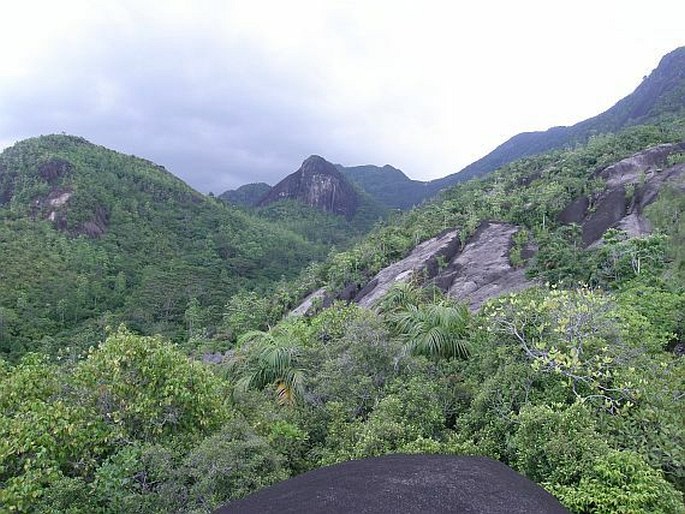
Description: Slender monoecious palm up to 14 m; trunk is simple, with leaf scars and black spines when young. Leaves create open crown at the top of trunk, they are 2–3 m long, divided equally into narrow pinnae; sheats of young leaves have black spines. Inflorescence grows axillary between leaves, it is erect panicle with very long stiff branches; flowers are very small, unisexual, 3-merous; male flowers have 40–50 stamens and small pistillodium, the female flowers have 6 staminodes, 1 celled ovary and minute stigmas. Fruits are globose, orange-red drupes 1–1.5 cm in diameter.
Possible confusion: This species is habitually very similar to other endemic Seychellan palm, Deckenia nobilis. This species differs by yellow spines and quite different inflorescence, which overhangs from base of leaf-sheats and is protected by 2 spiny sheats in young.
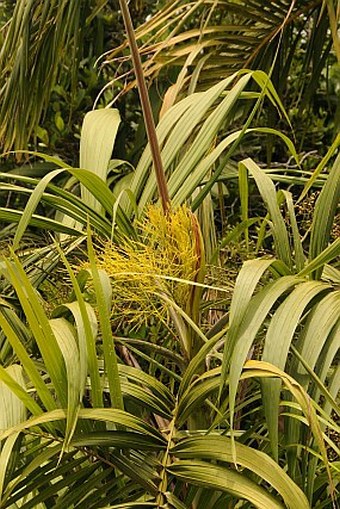
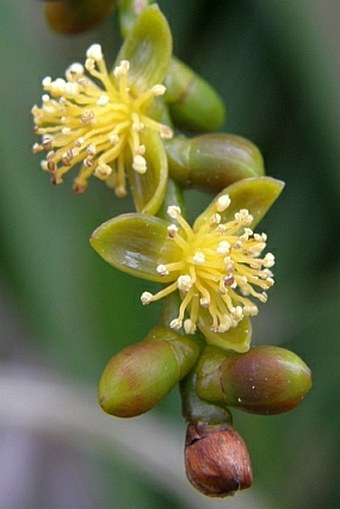
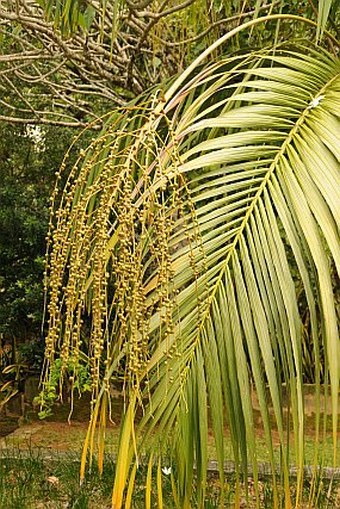
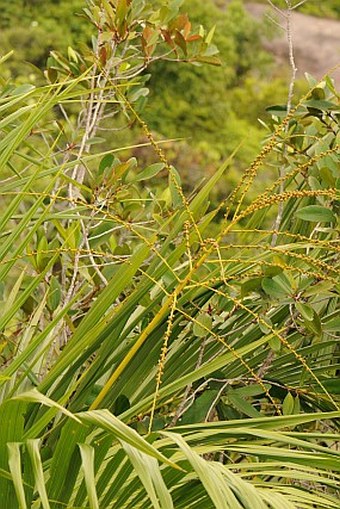
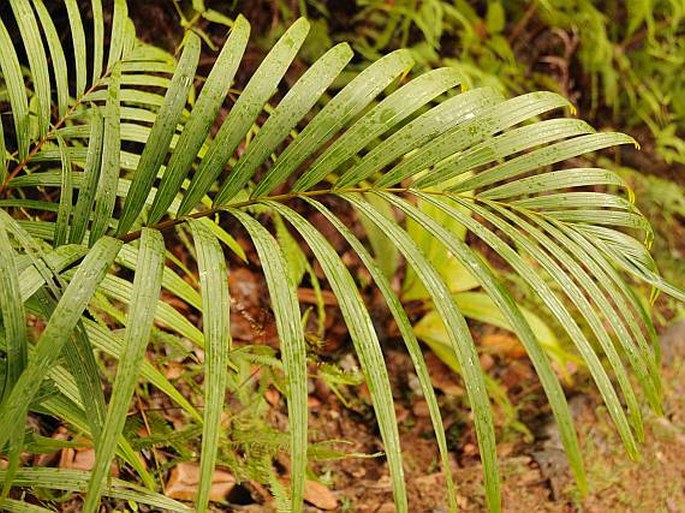
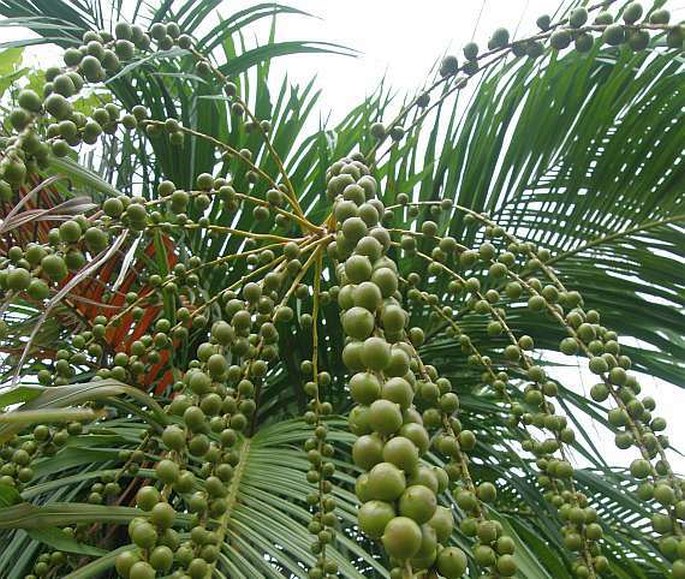
These images were taken in Seychelles, Mahé and Praslin islands (by Vít Grulich and Alena Vydrová, 1.–9. 2. 2011).


